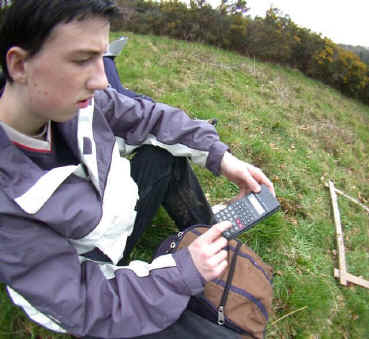
An Ecological Sampling Exercise
Processing & Interpreting Raw Data
Contents
Exercise using the Raw Data

| The raw data
forming the basis of this theoretical exercise was collected by students in a practical ecological sampling
exercise on the Heathland Restoration Project area, at the Woodland Education Centre,
Offwell. The exercise presented below was the follow-up exercise which the students
carried out to analyse their data. In order to answer some of the questions, students will need to visit the Heathland Restoration Project to access additional background information on the site.
Thanks are due to Dr Wendy Graham and the Axe Valley Community College, for permission to publish the raw data and follow-up exercise.
|
| Sections in blue are not part of the original exercise set by Dr Graham for her students. They have been added to the exercise to further test skills in extracting information from the data and interpreting it, as well as in using statistical methods. They are optional. |
|
||
|